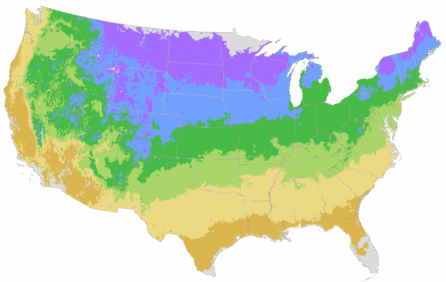You're growing in this Zip Code:
Change LocationGrace N' Grit™ Yellow Shrub Rose
Rosa 'Radmonyel' PP #30,571
Retailers Near You
No Retailers found within 50 miles of your zipcode
Be Inspired: How to Use this Plant
| Bloom Time | Summer through fall |
|---|---|
| Deciduous/Evergreen | Deciduous |
| Special Features | Easy Care, Improved Pest and Disease Resistance, Non-toxic to Cats and Dogs |
| Growth Rate | Moderate |
| Flower Attributes | Flowers for Cutting, Long Bloom Season, Repeat Flowering, Showy Flowers |
| Patent Act | Asexual reproduction of plants protected by the Plant Patent Act is prohibited during the life of the patent. |
| Landscape Use | Barrier, Border, Container, Hedge |
| Design Ideas | Ideal to integrate into shrub or mixed borders for solid, long-season color without additional care. Makes a fine addition to south and west facing foundation beds. Use in the back of perennial borders to intensify season long color. Plant in masses or quantities in irregular groups for a large scale cover that blocks weeds. Great in pairs to flank an entry, steps or gate. Plant in mass to create a low, semi-formal hedge or to clean up unattractive paving edges around porches and patios. |
| Flower Color | Yellow |
| Foliage Color | Green |
| Companion Plants | Peony (Paeonia); Spirea (Spiraea); Russian Sage (Perovskia); Boxwood (Buxus); Coneflower (Echinacea); Catmint (Nepeta) |
| Care Instructions | Thrives in enriched, loamy, well-drained soil. Water deeply, regularly in first growing season to establish an extensive root system; avoid overhead watering. Feed before new growth begins in spring; repeat mid-season. Mulch to keep roots cool. Prune in late winter or early spring after threat of frost is gone to promote vigorous new growth. |
| Lore | The signature genus Rosa of the Rosaceae family was classified by Linnaeus in the 18th century and today contains over one hundred species, all originating in the Northern Hemisphere. From the wild species there have evolved thousands of hybrids and forms with many branches in the ancestral tree. Roses are among the most ancient ornamentals in cultivation. Today's repeat blooming roses derive their remondant characteristics from the China tea roses and hybrid perpetuals. |
| Bloom Time | Summer through fall |
|---|---|
| Deciduous/Evergreen | Deciduous |
| Special Features | Easy Care, Improved Pest and Disease Resistance, Non-toxic to Cats and Dogs |
| Growth Rate | Moderate |
| Flower Attributes | Flowers for Cutting, Long Bloom Season, Repeat Flowering, Showy Flowers |
| Patent Act | Asexual reproduction of plants protected by the Plant Patent Act is prohibited during the life of the patent. |
| Landscape Use | Barrier, Border, Container, Hedge |
|---|---|
| Design Ideas | Ideal to integrate into shrub or mixed borders for solid, long-season color without additional care. Makes a fine addition to south and west facing foundation beds. Use in the back of perennial borders to intensify season long color. Plant in masses or quantities in irregular groups for a large scale cover that blocks weeds. Great in pairs to flank an entry, steps or gate. Plant in mass to create a low, semi-formal hedge or to clean up unattractive paving edges around porches and patios. |
| Flower Color | Yellow |
| Foliage Color | Green |
| Companion Plants | Peony (Paeonia); Spirea (Spiraea); Russian Sage (Perovskia); Boxwood (Buxus); Coneflower (Echinacea); Catmint (Nepeta) |
| Care Instructions | Thrives in enriched, loamy, well-drained soil. Water deeply, regularly in first growing season to establish an extensive root system; avoid overhead watering. Feed before new growth begins in spring; repeat mid-season. Mulch to keep roots cool. Prune in late winter or early spring after threat of frost is gone to promote vigorous new growth. |
|---|
| Lore | The signature genus Rosa of the Rosaceae family was classified by Linnaeus in the 18th century and today contains over one hundred species, all originating in the Northern Hemisphere. From the wild species there have evolved thousands of hybrids and forms with many branches in the ancestral tree. Roses are among the most ancient ornamentals in cultivation. Today's repeat blooming roses derive their remondant characteristics from the China tea roses and hybrid perpetuals. |
|---|
Retailers Near You
No Retailers found within 50 miles of your zipcode
Retailers Near You
No Retailers found within 50 miles of your zipcode
Buy Online
We cannot currently ship this product to your zip code.
About Us
We have been pioneers and craftsmen in the art of growing plants for nearly
100 years. Since our founding in Southern California by Harry E. Rosedale, Sr.
in 1926, we have been absolutely dedicated and obsessed with quality.
We have been pioneers and craftsmen in the art of growing plants for nearly 100 years. Since our founding in Southern California by Harry E. Rosedale, Sr. in 1926, we have been absolutely dedicated and obsessed with quality.











